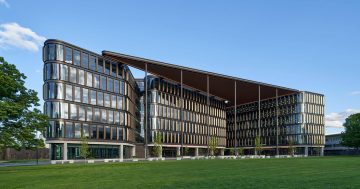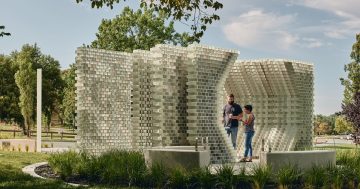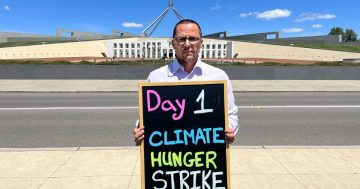
Australian Institute of Architects national president-elect Shannon Battisson said the profession is uniquely placed to be part of the solution. Photo: Australian Institute of Architects.
The voice of Canberra’s architects is stepping up to take the profession’s concerns about climate change and the future of housing to the national level.
Australian Institute of Architects ACT Chapter president Shannon Battisson has been elected national president, vowing to urge governments at all levels to face the challenges of the climate crisis, designing for the future and providing affordable housing.
Ms Battisson said the Black Summer had focused people’s minds on the threat of a changing climate but much appeared to be forgotten during the COVID-19 pandemic.
“We were really poised to get people’s attention and make a difference to how we build our houses and suburbs,” she said.
“Now more than ever, we really need people who have a passion for doing it well, framing that conversation.”
Ms Battisson said the ACT Government was doing its bit on climate change, but a similar will was lacking from the Federal Government.
“Our national government needs to be looking at it far more strongly than they are now,” she said.
“You have to lead from the top down. If they’re not prepared to back renewable infrastructure and investment, how much can the states do?”
With the construction industry being a major contributor to greenhouse gas emissions, the architecture profession was uniquely placed to be part of the solution.
“Taking that conversation up to the federal level is something I’m very interested in,” she said.
And Canberra was the perfect base to be part of that conversation and provide some models for dealing with national problems.
“If we can’t do it well here in Canberra, it doesn’t say great things for the rest of the country,” she said.
The government-fed construction boom may be good for the economy, but Ms Battisson is worried that the pace and urgency of development may mean good design principles, especially what is needed in a warming climate, may be lost, particularly as older suburbs densify.
She is concerned that across all kinds of development, but particularly high-rise, not enough space will be left between buildings to allow for green amenity and the trees needed to cool suburbs.
“We need to do far better at creating really meaningful landscape spaces between our high-density development,” she said.
Ms Battisson also believes a lot of money and angst could be saved if buildings were designed properly in the first place.
She said many Australians don’t think that they are worthy of good design, that it has to cost extra and is only for the luxury end of the market.
“And it’s just not true. If thought goes into it at the start, it should cost no more than a project poorly conceived and poorly built and then we spend decades trying to overcome it,” she said.
“Good design will save money in the long run and create more joyful places for people to live.”
Ms Battisson said the nation was facing a housing crossroads as a runaway market leaves too many behind, and what is deemed affordable is anything but.
She said there needed to be more focus on a greater range of housing to suit all needs – from social housing to aged care, including accessibility so people not-so able-bodied can move about the city and enter and exit its buildings.
“It would be great to see far more expenditure in supporting people in meaningful and quality housing,” she said.
“It’s a basic human right in a developed society that we can provide for those who are struggling. We don’t see that prioritised in any way at the moment.”
Ms Battisson said there needed to be an open and frank conversation about what homes looks like, and as more people look to regional towns and villages such as those surrounding Canberra to live, she warns that simply replicating city suburbs threatens to destroy the charm and character that attracts people to them.
They needed a different solution, she said.
Ms Battisson will step down as head of the ACT Chapter in June and will be president-elect for a year before formally taking on the national role next year.





















